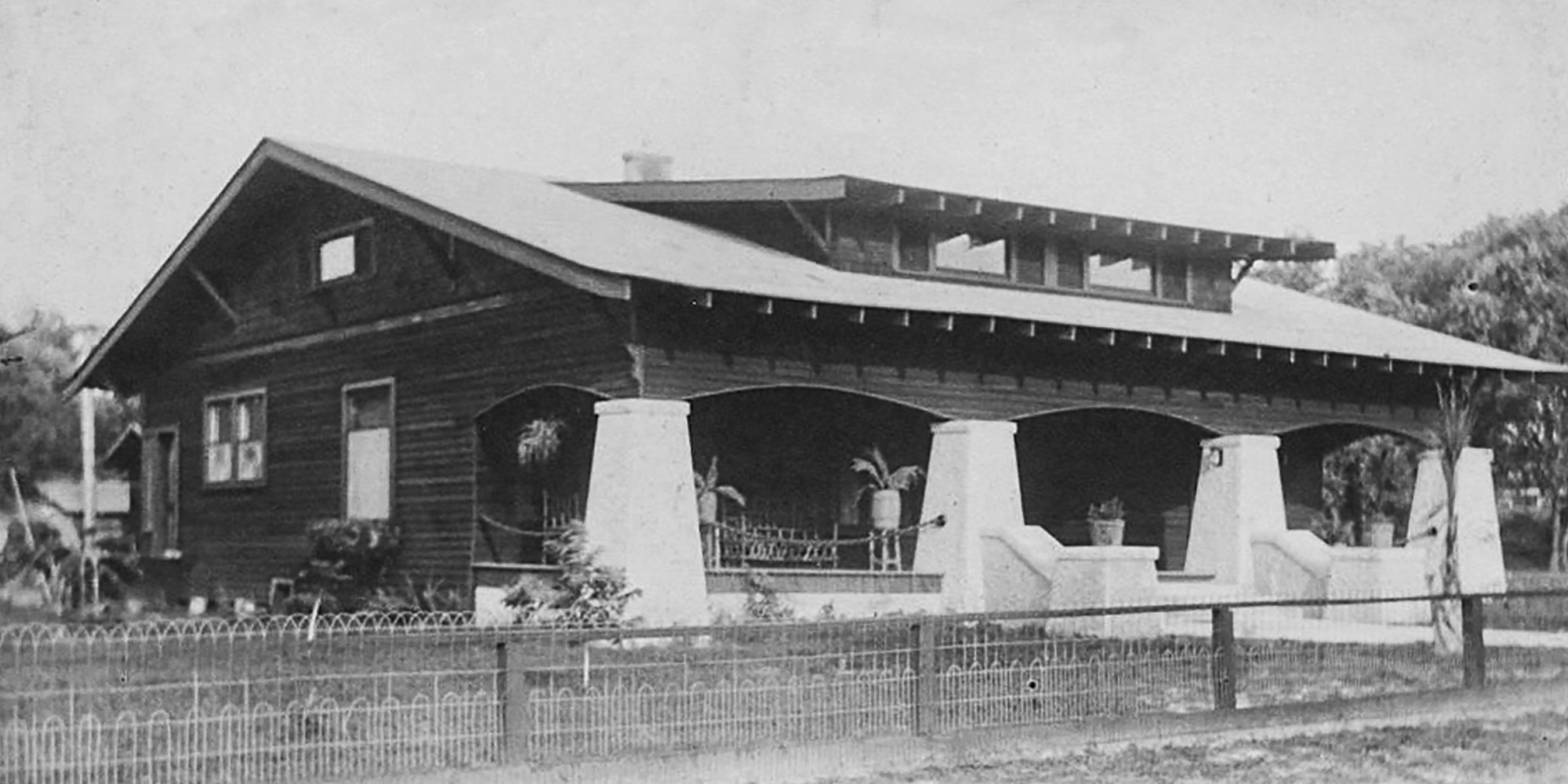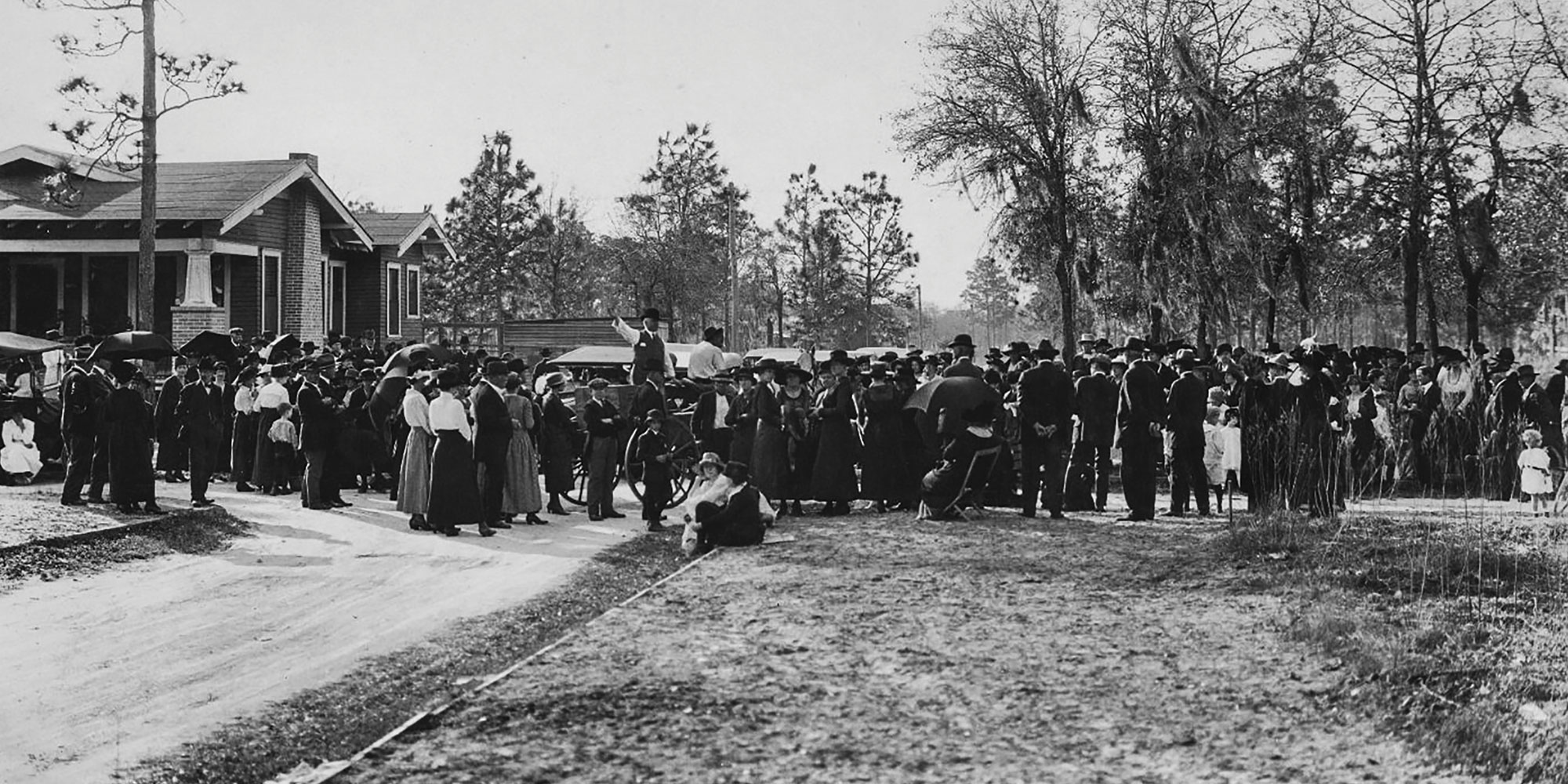What started as a tiny, humble neighborhood a century ago has significantly evolved into the vibrant Seminole Heights of today. Seminole Heights was one of several neighborhoods to grow up in the 1910s in the Tampa suburbs, but outside of the city’s corporate limits. In addition to being a contemporary of Palma Ceia (first platted as the Madrid subdivision in 1903), it also was founded around the same time as the South Tampa neighborhoods of Virginia Park (first platted in 1912). The first plat for Seminole Heights was filed by the Seminole Development Company on July 25, 1911.
Founded at the peak of the bungalow-style home’s popularity, Seminole Heights boasts more bungalows than any other Tampa neighborhood. The high ceilings, low-pitched roof with wide eaves and large airspace underneath make the small wood-frame building ideal for warm climates. Rooted in British-Colonial India, the bungalow first appeared in the U.S. around the turn of the 20th century in California before becoming an iconic part of Tampa.
The original Seminole Heights neighborhood, created mostly through the work of developer T. Roy Young, was pretty small, bounded by Hillsborough Avenue on the north, Wilder Avenue on the south, Florida Avenue on the west, and Central Avenue on the east. Additional, adjacent plats were filed under a number of subdivision names, some by the original Seminole Heights investors and others by people looking to cash in on the growing name recognition. Soon, Seminole Heights was joined by Suwanee Heights, Idlewild, Hampton Terrace and many other subdivisions (some with either Seminole or Suwanee in their names).

By the 1930s, Seminole Heights was the general name of a large, but interconnected neighborhood ranging from the Hillsborough River on the north and east, Martin Luther King, Jr. Avenue on the south, and 15th Street on the east. The property originally belonged to a handful of owners, including the Robles family, C. L. Wilder and J. H. Fessenden. Several developers and investors devoted their time and money to the neighborhood. Chief among them were T. Roy Young, who later developed the Beach Park neighborhood, Giddings E. Mabry, John L. Branch, Fred Hutto, J. J. Schoenbrun, George Sparkman, George Weeks, Cecil Charles and Wilder. They were later joined by Howell T. Lykes, D. S. Wells and Henry Johnson. Mabry was the city attorney and Johnson was on city council. A portion of Wilder’s property became the home of Hillsborough High School in 1928.
From the beginning of the neighborhood until 1946, Tampa’s extensive streetcar network played an important role in the birth, growth and prosperity of Seminole Heights. The Sulphur Springs Traction Line, which ran from Tampa to the Sulphur Springs recreation area just north of the Hillsborough River, was the first streetcar line in the area. Tampa Electric took over that line, which traveled along Central Avenue, and operated it until the entire streetcar system was taken offline in 1946.
Cars also were important to Seminole Heights, and the main thoroughfares of Florida, Central, Nebraska, Hillsborough and Buffalo (now MLK, Jr.) were critical. While Seminole Heights mainly was a residential suburb, those streets supported a wide variety of services for neighborhood residents, including schools, churches, a library and small businesses. Tasty food options were readily available, with Ayers Diner (better known as Nicko’s) opening in 1951, the Bosankos’ famed Bo’s Ice Cream, which opened in 1955, and a host of locally owned fried chicken and burger restaurants.
More important than streetcars and automobiles to the d. success of Seminole Heights is the spirit of community. The neighborhood is incredibly supportive and cohesive, boasting a tight-knit spirit. This became crucial in the 1960s when the construction of Interstate 275 caused damage. The north-south interstate created two separate neighborhoods where there was once one. The east side of the interstate fared worse and has struggled to find its footing. The west side, where the original subdivisions are located, has seen the benefits of historic preservation efforts, the influx of capital and considerable sweat equity.
In interviews during the early 1980s, longtime residents reflected that the creation of one-way traffic on Florida Avenue and the decline of nicer businesses on Nebraska Avenue contributed to the overall decline in Seminole Heights. Those same main thoroughfares, Florida and Nebraska, are now contributing to the neighborhood’s renaissance.
Today, Seminole Heights has a bustling night scene, thanks to popular restaurants, craft breweries and distilleries. Places like the Chop Chop Shop (in the historic diner once occupied by Nicko’s), Ella’s Americana Folk Art Cafe and Rooster & The Till add to the unique vibe of Seminole Heights, as well as The Independent Bar and Cafe, Cappy’s Pizzeria, Southern Brewing & Winemaking, Brew Bus, Angry Chair Brewing and 82° West Distilling.
Housing prices, which spiked during the pandemic, also are creating opportunities for homeowners to profit, as well as concerns to those renting homes and apartments. This is pointing to the potential for another change in the neighborhood’s demographics. Only time will tell how Seminole Heights will continue to evolve.
Learn more about The History of Tampa Heights



